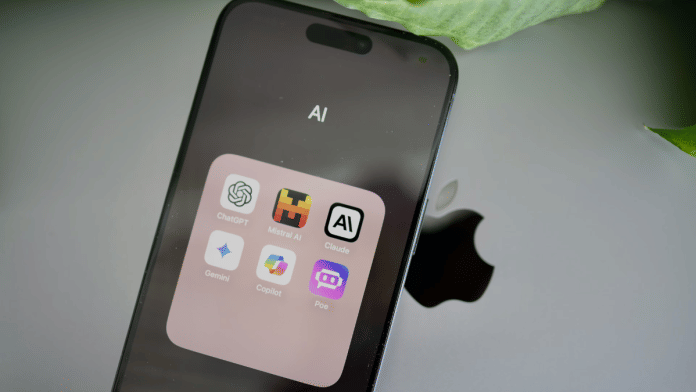Artificial intelligence is no longer just a frontier technology – it’s a pervasive force reshaping how we live, work and learn.
As the World Economic Forum’s Future of Jobs Report 2025 outlines, AI is expected to disrupt nearly every industry, shifting the skillsets required across global labour markets.
AI’s most significant influence lies in how we access, process and apply information, fundamentally redefining education and the way we acquire knowledge.
From this perspective, AI literacy isn’t just a “nice to have” for IT professionals; it’s essential for developing human intelligence itself and has key implications for the education sector.

Education is among the sectors most affected by AI-driven transformations.Image: Future of Jobs Report
Yet, while technological change races ahead, education systems are often left trying to catch up.
This gap between innovation and education is exactly what the new AI Literacy Framework (AILit) aims to close. A joint initiative by the European Commission (EC) and the Organisation for Economic Co-operation and Development (OECD), with support from Code.org and international experts, the framework is a major step toward preparing young learners to engage with AI critically, creatively and ethically.
As the OECD highlights, this effort isn’t just about teaching coding or understanding algorithms. It’s about building a foundation of competencies that empower learners to navigate an AI-integrated world with confidence and purpose.

6 principles to shape AI literacy in schools.Image: EC/OECD
Why AI literacy – and why now?
As generative AI tools become ubiquitous in schools, workplaces and daily digital life, it’s crucial to instil responsible use from a young age. Learners are not only using AI – they are experimenting with it, often without formal guidance on its limitations and risks.
Almost half of Gen Z scored poorly on “evaluating and identifying critical shortfalls with AI technology“, such as whether AI systems can make up facts, according to a 2024 report from TeachAI and EY.
The Forum’s Shaping Learning: The Role of AI in Education reinforces this trend. It notes that education systems must go beyond digital literacy and embrace AI literacy as a core educational priority. That includes equipping students with the critical thinking skills to evaluate outputs, the creativity to collaborate with AI in meaningful ways and the ethical grounding to question its role in society.
What the AILit Framework delivers
The AILit Framework, currently in draft form, defines AI literacy as a blend of knowledge, skills and attitudes that enable learners to engage with AI responsibly and effectively. It is organized around four practical domains:
1. Engaging with AI – Understanding when and how AI is present in everyday tools and critically evaluating its outputs.
2. Creating with AI – Collaborating with AI tools to support problem-solving and creativity, while considering ethical implications like ownership and bias.
3. Managing AI’s actions – Delegating tasks to AI responsibly, setting guidelines and ensuring human oversight.
4. Designing AI solutions – Exploring how AI works and how to build or adapt systems to solve real-world problems.
Each domain is supported by 23 competencies and classroom-ready learning scenarios, making the framework both aspirational and actionable. It’s designed not just for computer science classes but across disciplines – from language and arts to social studies – reinforcing AI as a cross-cutting theme in education.

The AILit Framework reflects relevant knowledge, skills and attitudes found across multiple academic disciplines.Image: EC/OECD
Global insight for the classroom
One of the framework’s strengths is its foundation in global expertise. Drawing on research from AI4K12, UNESCO, and the EU’s DigComp frameworks, AILit incorporates the best of what’s already known and adapts it for practical use in primary and secondary education.
The framework also aligns with Article 4 of the EU AI Act, which mandates that those deploying AI systems must ensure users – including students and educator – have a sufficient level of AI literacy.
It complements the Digital Education Action Plan 2021–2027 and reinforces the idea that building a digitally skilled, AI-ready society must start in schools.
A call to action for the education sector
The Forum’s Future of Jobs Report 2025 projects that nearly 40% of the skills required by the global workforce will change within five years.
Preparing students for that future means going beyond traditional curricula to include AI-specific skills such as algorithmic thinking, prompt engineering and understanding bias in data systems.
But more than technical know-how, learners will need the human skills that AI can’t replicate – empathy, judgment, ethical reasoning and collaboration.
The AILit Framework weaves these values into its structure, promoting a skills-first, ethics-centered approach to learning in the AI era.

The core skills include human skills that AI can’t replicate.Image: Future of Jobs Report
How to get involved
The draft AILit Framework is open for public consultation until late 2025, and the final version will be released in early 2026.
Educators, policymakers, curriculum designers and education leaders are encouraged to explore the framework and share their feedback here.
By contributing to this global dialogue, you can help shape the competencies that will define the next generation of learners – not just as consumers of AI, but as its ethical stewards and creative shapers.
A shared responsibility
As the pace of AI innovation accelerates, the responsibility to prepare young people doesn’t rest solely on technology companies or policymakers – it lies with all of us. The AILit Framework provides a roadmap to do just that: to empower learners with the tools, mindsets and confidence to thrive in an AI-powered world.
Let’s ensure that the future of AI in education is not just reactive, but intentional, inclusive and transformative.
This article first appeared in the World Economic Forum. Read the original piece here.






